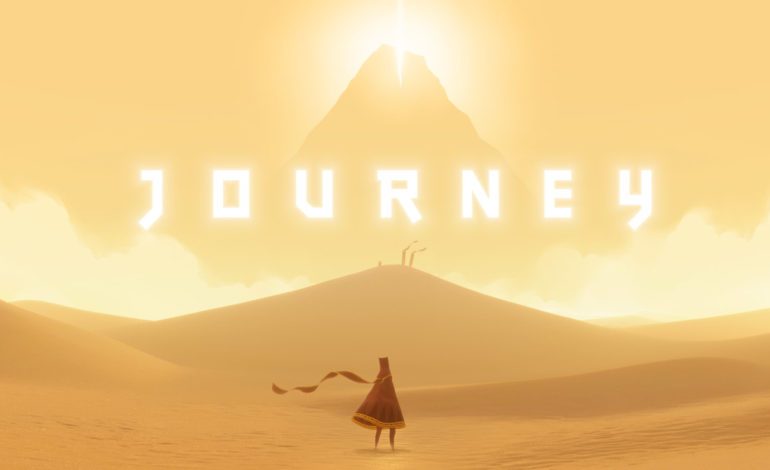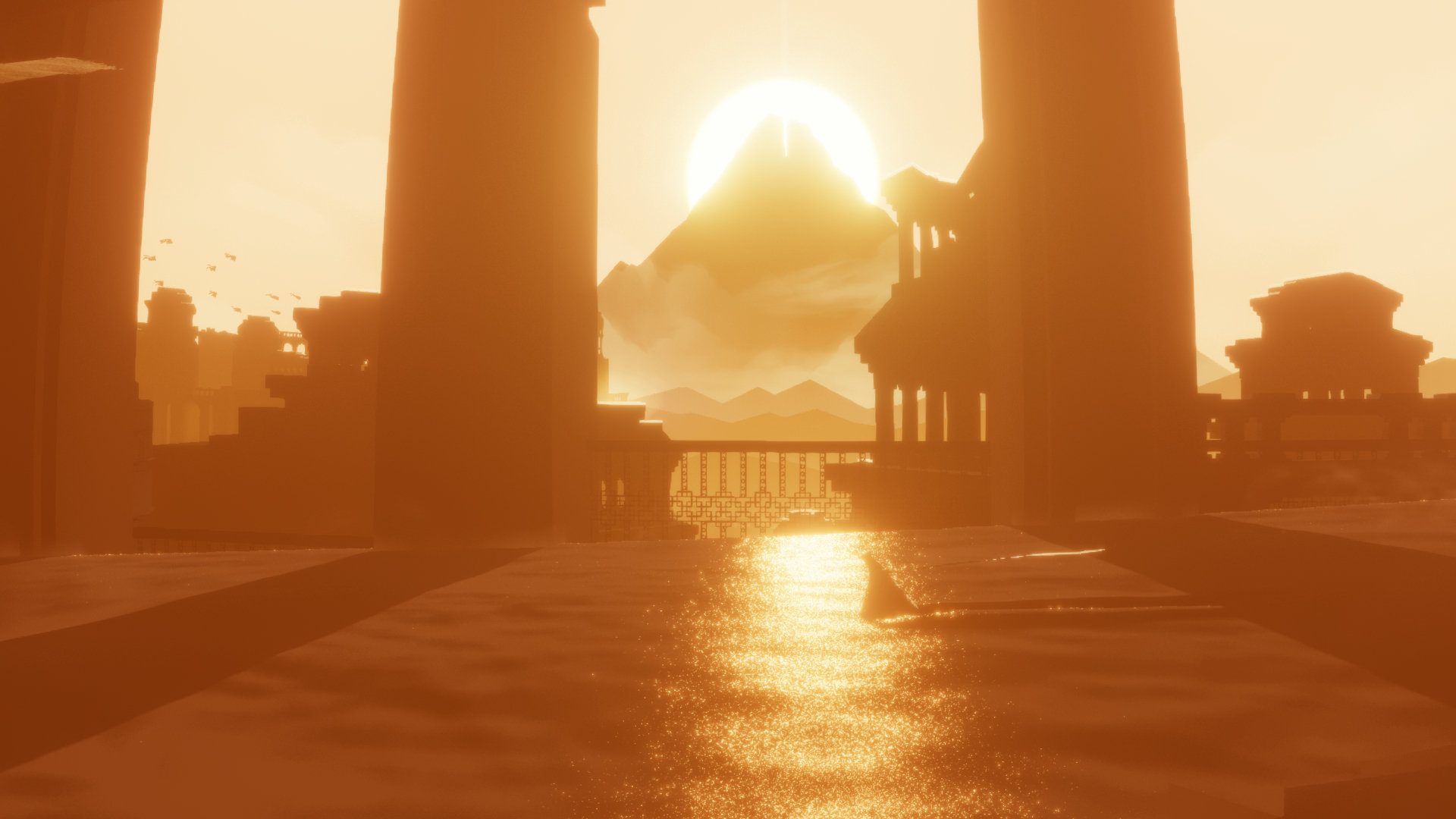

Journey had its tenth birthday this past weekend and thatgamecompany (TGC) has been reflecting on the game. In speaking with multiple outlets, the independent studio, led by co-founder and creative director Jenova Chen, detailed the game’s tumultuous development process, design decisions, and overall impact.
As an ambiguous, robed character guided by a mountain’s light, Journey has the player navigate temples, an underwater abyss, and a snowy valley to reach the summit. Along the way you are aided by flying scarfs, mosaic hieroglyphics and another player in the game whose musical chirps lead you towards the light. Cited chiefly as an emotional experience, Journey has been called everything from a masterpiece to simply “about nothing.” With a Guinness World Record of 118 awards, the game has certainly received critical praise. This praise did not come easy nor without its sufferings.
Chen told gameindustry.biz that, “Journey was a very difficult to make game.” The process was so difficult in fact that with $200,000 in debt TGC, “couldn’t afford anybody’s salaries.” Members such as Chris Bell (designer) and Matt Nava (art director) were among those who’s salary took a hit. The studio’s founders, “dropped to half salaries for the final six months of development,” to deal with the financial troubles.
Bell and Nava talked to The Ringer about Journey and detailed the hardships behind the scenes. “I don’t think many people fully understand what happened…but [TGC] shut down basically. Everyone left.” This shutdown was partially due to what Robin Hunicke (executive producer) called, “personal grudges,” that got the best of the team. TGC proceeded onward while, according to Nava, believing that, “in order to make great art, it was worth the suffering.”


Through that suffering though, the game survived. After its successful PS3 release the team, “took a retreat in the mountains and celebrated,” said Chen. Despite the success the company, “disbanded [and] everybody had to find new jobs.” Some of those new jobs were back with TGC after, “the studio raised several million in funding three months after launch,” and in the six months TGC took to, “start getting its portion of sales from Sony.” Journey proved to be a diamond in the rough after all the pressure that polished its design and overall experience.
As far as within the game is concerned, the stripped-down player character, limited online multiplayer, and sweeping Austin Wintory soundtrack are some notable elements from Journey. All of which were intended to, “innovate how it feels between people on the internet.” The game did so by having, “every element contribute to the storytelling, and what we learned is that the interactivity is the soloist. It’s the lead of the orchestra in gaming. According to Chen,
What Journey did really well was to make interactivity the climax—the memorable moment.


This interactivity ended up doing more than just connecting people virtually but connecting people outside of the game ‘spiritually’. “We started to see…players sharing their stories with us of what the game has meant to them.” Some of these stories were from players who had recently experienced a death of someone close to them and felt that Journey’s multiplayer brought them back together for a farewell. Chen went on to say,
When they played through the game together, it helped them to grieve. It helped them to let it go, knowing their loved one was going to a better place. I never thought the game would have the power to be essentially therapeutic, to help people, but it’s changed many people’s lives, and that’s the biggest surprise to me.
Perhaps who got the greatest connection through the game was Chen himself. Seeing video games as art, Chen feels that they, “connect the artist with the audience.” So, after ten years Chen says,
I feel loved. I feel not alone. And that’s a wonderful experience. This feeling of gratitude is also what gives me the inspiration to make future games.
Play games, take surveys and take advantage of special offers to help support mxdwn. Every dollar helps keep the content you love coming every single day.

